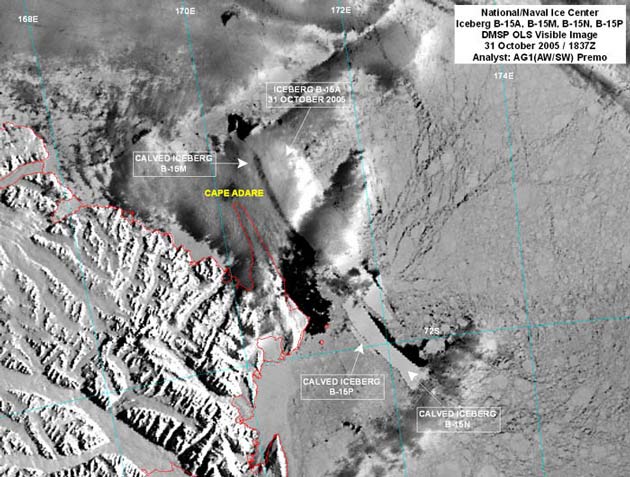Huge Iceberg Breaks Apart in Antarctica

Capping a 5-year-long saga of destruction, an iceberg about the size of the Hawaiian island of Maui has split into three pieces in the frigid Antarctic, scientists said Friday.
The larger iceberg, named B-15A, calved into three smaller icebergs — B-15M, B-15N and B-15P. Two of the larger icebergs (B-15M and B-15N) are about the size of Grand Cayman and St. Croix, respectively.
The fresh splits mark the twelfth, thirteenth and fourteenth times that a portion of B-15 has broken off, or calved, since the first calving event on May 30, 2000.
B-15A has been careening around the Ross sea for months, slamming into the coast and breaking off chunks of protruding ice features as big as cities. Back in January in McMurdo Sound it blocked ocean currents and caused other sea ice to build up, threatening wildlife.
The latest breakup was first seen in satellite imagery from the Defense Meteorological Satellite Program by researchers at the National Ice Center (NIC).
Iceberg names are derived from the Antarctic quadrant where they are first sighted. When they are first spotted, the NIC documents an iceberg's point of origin. The iceberg is assigned the letter of the quadrant, along with the sequential number.
- Amazing Images in Science and Nature
- Extreme Living: Scientists at the End of the Earth
- New Large Iceberg Breaks off Antarctica
- Antarctic Glaciers Melting Rapidly
Get the world’s most fascinating discoveries delivered straight to your inbox.



